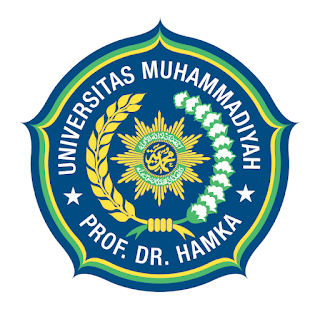Acioli, C., Scavarda, A., & Reis, A. (2021). Applying industry 4.0 technologies in the COVID–19 sustainable chains. International Journal of Productivity and Performance Management, 70(5), 988–1016. https://doi.org/10.1108/IJPPM-03-2020-0137
Ahmetya, A. R., Setyaningrum, I., & Tanaya, O. (2023). Era baru ketenagakerjaan: Fleksibilitas pekerja digital pada era revolusi industri 4.0. Sang Pencerah: Jurnal Ilmiah Universitas Muhammadiyah Buton, 9(24), 1001–1015.
Ali, N., Jan Kakakhel, S., Rahman, W., & Ahsan, A. (2014). Impact of human resource management practice on employees’ outcome (Empirical evidence from public sector universities of Malakand division, KPK, Pakistan). Life Science Journal, 11, 68–77.
Bhat, Z. H., Yousuf, U., & Saba, N. (2023). Revolutionizing work-life balance: Unleashing the power of telecommuting on work engagement and exhaustion levels. Cogent Business & Management, 10(2), 2242160. https://doi.org/10.1080/23311975.2023.2242160
BPS. (2022). Analisis isu terkini.
Fahimnia, B., Sarkis, J., & Davarzani, H. (2015). Green supply chain management: A review and bibliometric analysis. International Journal of Production Economics, 162, 101–114. https://doi.org/10.1016/j.ijpe.2015.01.003
Fisher, G. G., Bulger, C. A., & Smith, C. S. (2009). Beyond work and family: A measure of work/nonwork interference and enhancement. Journal of Occupational Health Psychology, 14(4), 441–456. https://doi.org/10.1037/a0016737
Fisher, G., Stanton, J., & Gavin, J. (2003). Modelling the relationship between work life balance and organisational outcomes. Proceedings of the Conference on Work-Life Balance, 1–23.
Greenhaus, J. H., & Allen, T. D. (2011). Work-family balance: A review and extension of the literature. In J. C. Quick & L. E. Tetrick (Eds.), Handbook of occupational health psychology (2nd ed., pp. 165–183). American Psychological Association.
Hill, E. J., Grzywacz, J. G., Allen, S., Blanchard, V. L., Matz-Costa, C., Shulkin, S., & Pitt-Catsouphes, M. (2008). Defining and conceptualizing workplace flexibility. Community, Work & Family, 11(2), 149–163. https://doi.org/10.1080/13668800802024678
Kelliher, C., & Anderson, D. (2010). Doing more with less? Flexible working practices and the intensification of work. Human Relations, 63(1), 83–106. https://doi.org/10.1177/0018726709349199
Komari, N., & Sulistiowati. (2018). Kajian teoritis work life balance. Jurnal Ekonomi dan Bisnis, Universitas Tanjungpura, 419–426. https://pascasarjanafe.untan.ac.id/wp-content/uploads/2022/09/39.pdf
Monika, A. K., Parwanto, N. B., Nasrudin, Agustina, N., & Dokhi, M. (2020). The impact of digital economy on the characteristics of employment in Indonesia 2018. International Journal of Innovation, Creativity and Change, 11(12), 314–330.
Öztürk, O., Kocaman, R., & Kanbach, D. K. (2024). How to design bibliometric research: An overview and a framework proposal. Review of Managerial Science. https://doi.org/10.1007/s11846-024-00738-0
Ramdhani, A., Ramdhani, M. A., & Amin, A. S. (2014). Writing a literature review research paper: A step-by-step approach. International Journal of Basic and Applied Sciences, 3(1), 47–56.
Sekiyama, T. (2020). The impact of the fourth industrial revolution on student mobility from the perspective of education economics. Creative Education, 11(4), 435–446. https://doi.org/10.4236/ce.2020.114031
Setyaningrum, I., & Hakim, R. (2023). Kemitraan sebagai pendorong peningkatan produktivitas industri pengolahan skala mikro di Indonesia. Kabilah: Journal of Social Community, 8(1), 1065–1078.
Sirgy, M. J., & Lee, D. J. (2016). Work-life balance: A quality-of-life model. Applied Research in Quality of Life, 11(4), 1059–1082. https://doi.org/10.1007/s11482-015-9419-6
Snyder, H. (2019). Literature review as a research methodology: An overview and guidelines. Journal of Business Research, 104, 333–339. https://doi.org/10.1016/j.jbusres.2019.07.039
Suryadi, S., & Nasution, F. A. P. (2023). Revolusi industri, tren pekerjaan masa depan, dan posisi Indonesia. Jurnal Ketenagakerjaan, 18(2), 124–141. https://doi.org/10.47198/jnaker.v18i2.237
Susanto, P., Hoque, M. E., Jannat, T., & Emely, B. (2022). Work-life balance, job satisfaction, and job performance of SMEs employees: The moderating role of family-supportive supervisor behaviors. Frontiers in Psychology, 13, 906876. https://doi.org/10.3389/fpsyg.2022.906876
Thilagavathy, & Geetha. (2023). Work-life balance: A systematic review. Vilakshan - XIMB Journal of Management, 20(2), 258–276. https://doi.org/10.1108/xjm-10-2020-0186
Wong, K. P., Teh, P.-L., & Chan, A. H. S. (2023). Seeing the forest and the trees: A scoping review of empirical research on work-life balance. Sustainability, 15(4), 2875. https://doi.org/10.3390/su15042875
Xing, B., & Marwala, T. (2018). The synergy of blockchain and artificial intelligence. SSRN Electronic Journal. https://doi.org/10.2139/ssrn.3225357
Yadav, R. S., & Mishra, P. S. (2019). Work–life balance in Indian context: A conceptual review. IOSR Journal of Business and Management (IOSR-JBM), 21(4), 55–61. https://doi.org/10.9790/487X-2104075561
Zaky, M. (2022). Dampak keseimbangan kehidupan kerja dan kehidupan pribadi terhadap kepuasan dan kinerja karyawan. BRANDING: Jurnal Ilmiah Manajemen dan Bisnis, 72–86. https://www.journal.uinsgd.ac.id/index.php/branding
Zupic, I., & Čater, T. (2015). Bibliometric methods in management and organization. Organizational Research Methods, 18(3), 429–472. https://doi.org/10.1177/1094428114562629
